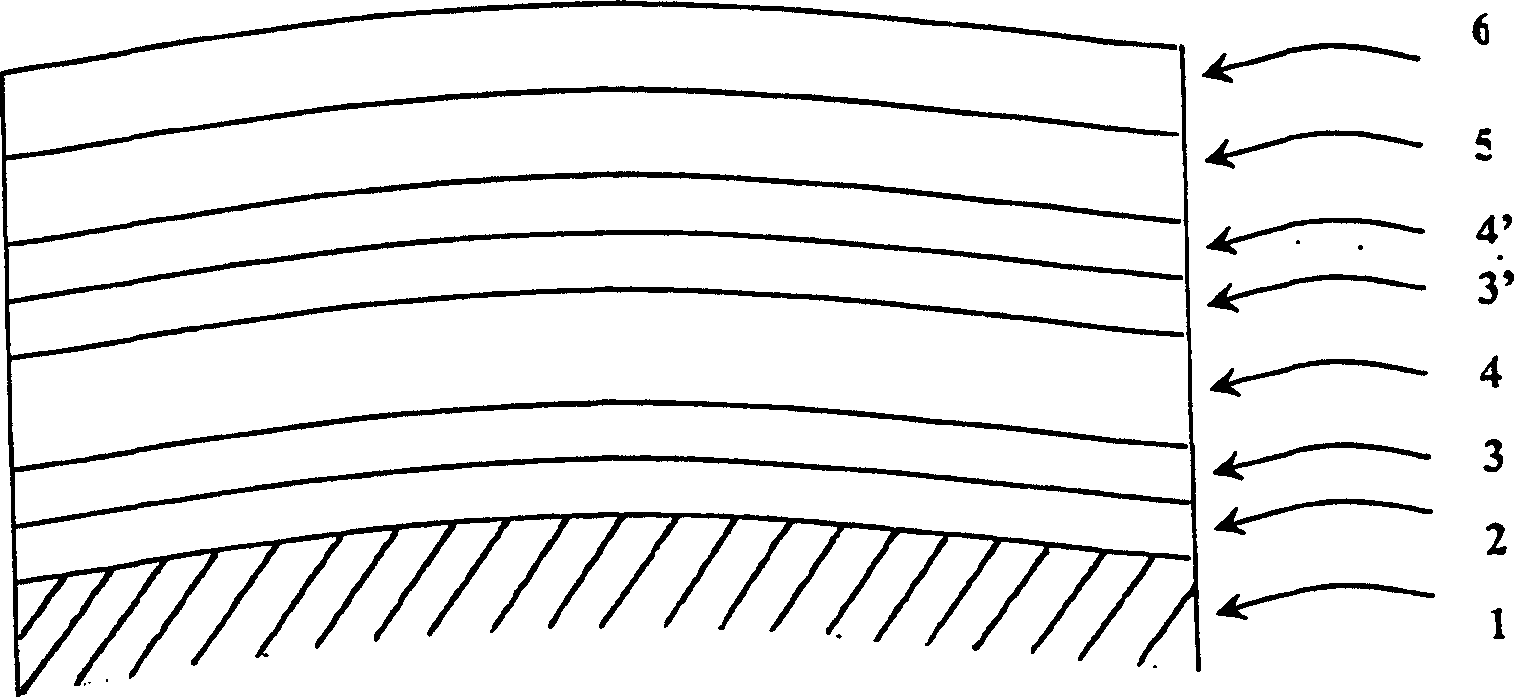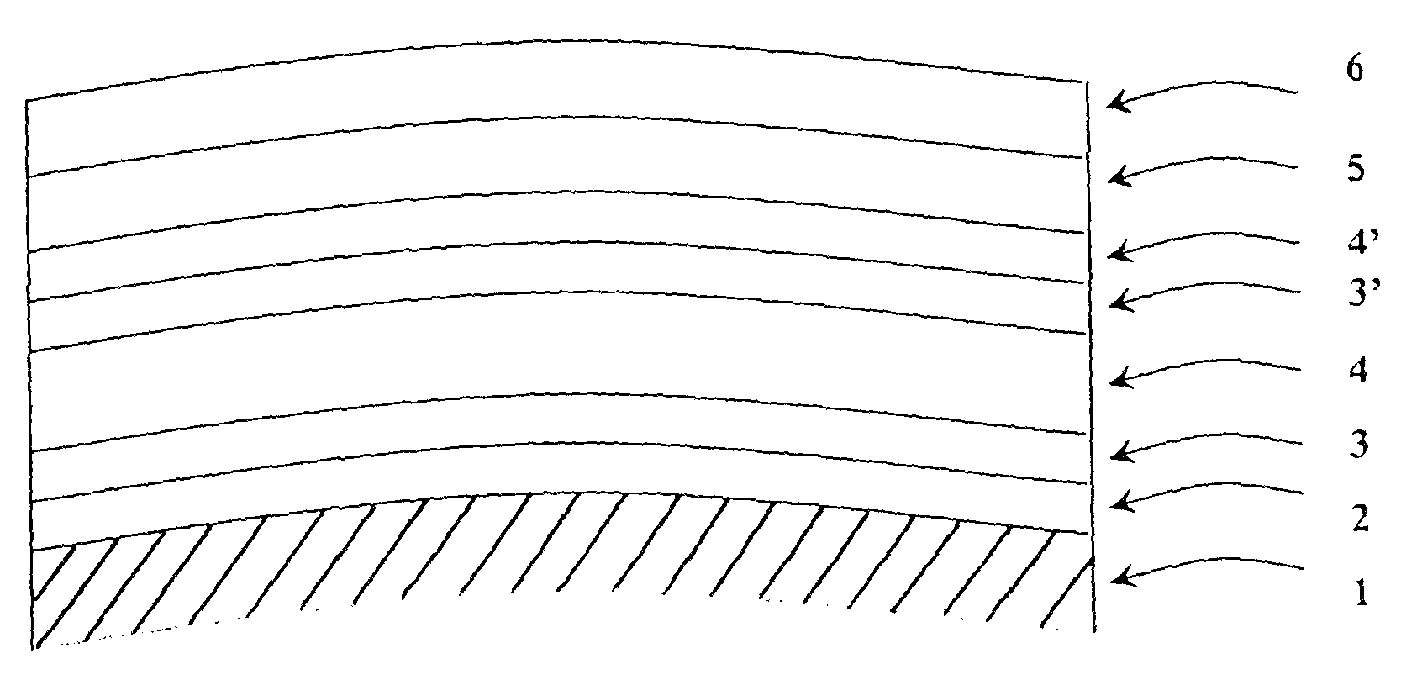Method for cold process deposition of antiglare layer
An anti-reflection and build-up layer technology, applied in coatings, layered products, sputtering, etc., can solve the problems of increased absorption of MgF2 layer, cumbersome methods, and increased production costs.
- Summary
- Abstract
- Description
- Claims
- Application Information
AI Technical Summary
Problems solved by technology
Method used
Image
Examples
Embodiment
[0046] In order to characterize the properties of the antireflective buildups obtained according to the method of the invention, we prepared antireflective buildups on organic substrates (CR39) using different high refractive index materials.
[0047] SiO for matrix 2 / HI / SiO 2 / HI / MgF 2 Coating layer coating consisting of four layers of overcoating type (HI stands for material with high refractive index).
[0048] The process of the invention is carried out with a Balzers BAK 760 vacuum evaporator.
[0049] The different HI materials used are listed in the table below. The respective suppliers are indicated in parentheses. For each high refractive index material, we treated the bottom layer of HI material with ion bombardment in the presence of argon gas at a voltage of 100 V and a current of 1 A for 1 min to obtain a matrix, The second matrix was not treated with ion bombardment. Next, MgF was deposited by vacuum evaporation without ion assistance 2 .
[0050] In the...
PUM
| Property | Measurement | Unit |
|---|---|---|
| thickness | aaaaa | aaaaa |
| thickness | aaaaa | aaaaa |
| thickness | aaaaa | aaaaa |
Abstract
Description
Claims
Application Information
 Login to View More
Login to View More - R&D
- Intellectual Property
- Life Sciences
- Materials
- Tech Scout
- Unparalleled Data Quality
- Higher Quality Content
- 60% Fewer Hallucinations
Browse by: Latest US Patents, China's latest patents, Technical Efficacy Thesaurus, Application Domain, Technology Topic, Popular Technical Reports.
© 2025 PatSnap. All rights reserved.Legal|Privacy policy|Modern Slavery Act Transparency Statement|Sitemap|About US| Contact US: help@patsnap.com


